How to Make a DIY Floral Chandelier
Have you ever walked into a room and been instantly captivated by a stunning centerpiece hanging from the ceiling? Imagine creating that magical moment in your own home with a DIY floral chandelier! This article will guide you through the steps of creating a stunning floral chandelier, providing tips on materials, design, and assembly to enhance your home decor with this beautiful centerpiece. Whether you're preparing for a special event, a cozy gathering, or simply want to elevate your everyday space, a floral chandelier can add that touch of elegance and charm that leaves everyone in awe.
When it comes to crafting your floral chandelier, selecting the appropriate materials is crucial. You want your creation to not only look beautiful but also be durable enough to last. Start by choosing the right type of flowers; consider using a mix of fresh and faux flowers, as this can help with longevity. Fresh flowers provide vibrant colors and fragrances, while faux flowers ensure that your chandelier remains stunning for years to come. Here are some popular choices:
- Fresh Flowers: Roses, peonies, and hydrangeas
- Faux Flowers: Silk roses, daisies, and sunflowers
Next, don't forget about greenery! Incorporating elements like eucalyptus, ivy, or ferns can add depth and texture to your design. Finally, the structural components are just as important. You’ll need a sturdy frame, which can be made from materials like wire, wood, or even a hula hoop for a whimsical touch. Consider the weight of your flowers and greenery when selecting your frame to ensure stability.
Now that you have your materials, let's dive into design inspiration! The beauty of a floral chandelier is that it can fit into any style you prefer. Are you drawn to a rustic vibe? Think about using twine, burlap, and wildflowers. If modern aesthetics are more your style, sleek lines and monochromatic colors can create a striking contrast. For a bohemian look, mix and match flowers and textures for a free-spirited feel. Here are some ideas to spark your creativity:
Choosing a color scheme can significantly affect the chandelier's overall aesthetic. A carefully selected palette can enhance your chosen style while ensuring visual harmony. For instance, soft pastels create a romantic feel, while vibrant colors can energize a space. Consider the following color combinations:
| Style | Color Scheme |
|---|---|
| Rustic | Earthy tones: browns, greens, and creams |
| Modern | Monochromatic: shades of white, gray, and black |
| Bohemian | Vibrant: reds, oranges, and purples |
Incorporating seasonal elements into your chandelier can make it more dynamic. For example, in the spring, you might opt for cherry blossoms and tulips, while in the fall, consider using autumn leaves and sunflowers. This not only keeps your design fresh but also reflects the beauty of nature throughout the year.
Adding personal touches can make your floral chandelier unique. Think about incorporating sentimental items like family heirlooms or your favorite flowers. Perhaps you have a special memory associated with a particular bloom? Including these elements can create a more meaningful design that tells your story.
Understanding proportions is essential for a balanced chandelier. The size of your chandelier should be in harmony with the space it occupies. A large room can handle a grand chandelier, while a smaller space might require a more delicate design. Additionally, consider how you arrange the flowers; clustering them in groups can create a fuller look, while spacing them out can offer a more airy feel.
Ready to bring your vision to life? Let’s dive into the assembly process! Start by constructing the frame, ensuring it’s sturdy enough to hold your chosen flowers and greenery. Once your frame is ready, it's time to attach the flowers. Use floral wire or hot glue to secure them in place, and don't forget to step back occasionally to assess the overall look. This will help you maintain balance and symmetry.
Proper hanging techniques are vital for safety and aesthetics. You can use ceiling hooks or a sturdy beam to suspend your chandelier. Make sure to test the stability before adding all your floral elements. After all, you want your creation to look beautiful without the risk of it falling!
Keeping your floral chandelier looking fresh requires regular maintenance. If you’ve used fresh flowers, be sure to replace them as needed and mist them with water to prolong their life. For faux flowers, a quick dusting will keep them looking vibrant. Remember, the more care you give your chandelier, the longer it will shine as a centerpiece in your home!
Q: How long will fresh flowers last in a chandelier?
A: Fresh flowers typically last anywhere from a few days to a week, depending on the type of flower and the care they receive.
Q: Can I use artificial flowers for my chandelier?
A: Absolutely! Artificial flowers can provide a long-lasting and low-maintenance option for your chandelier.
Q: What is the best way to hang my floral chandelier?
A: Use sturdy ceiling hooks or a beam, ensuring that the chandelier is secure and can support its weight.
Q: How can I customize my floral chandelier?
A: Personal touches such as favorite flowers, colors, or sentimental items can make your chandelier unique to you!
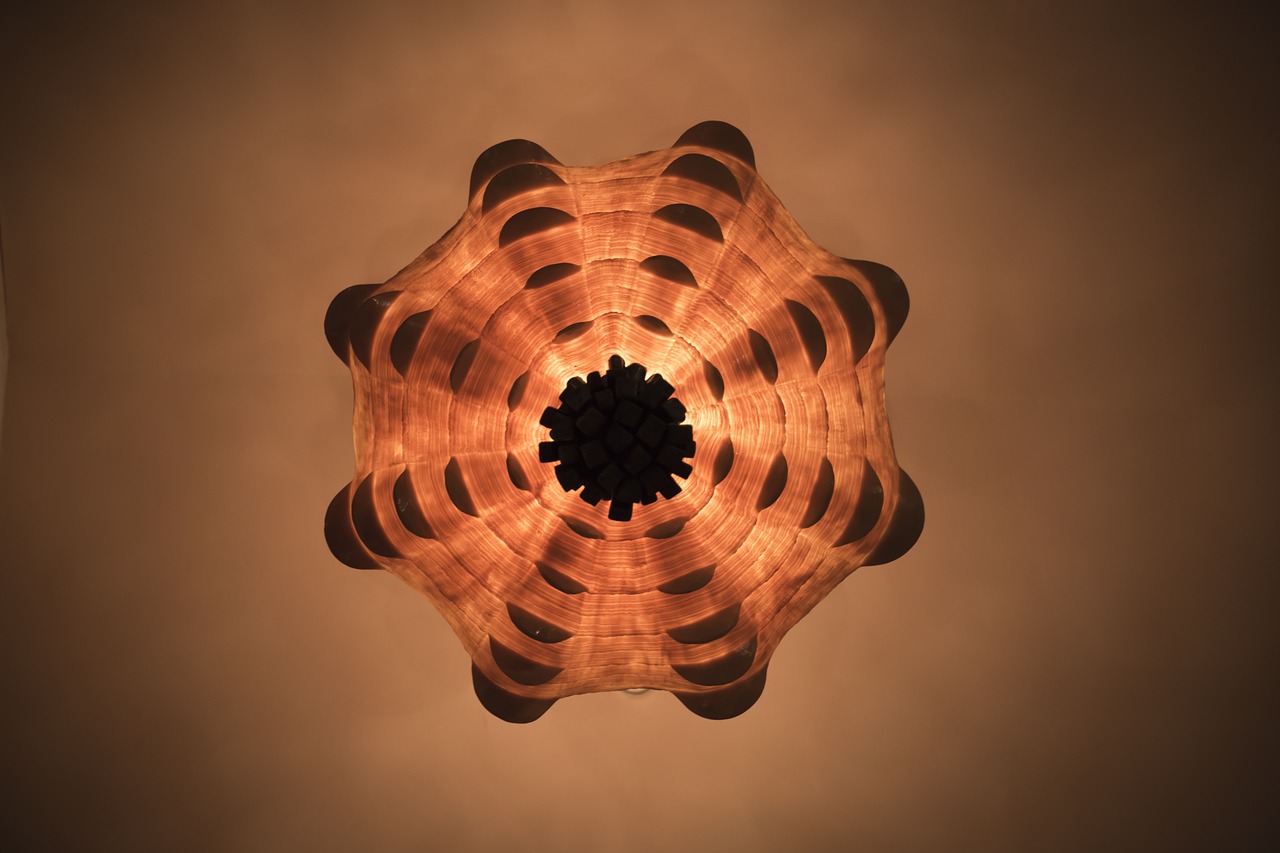
Choosing the Right Materials
When it comes to creating a stunning floral chandelier, the materials you choose can make all the difference. Imagine crafting a breathtaking centerpiece that not only enhances your home decor but also tells a story through its floral arrangement. The key is to select the right combination of flowers, greenery, and structural components. So, let's dive into what you need to consider!
First and foremost, think about the types of flowers you want to use. Fresh flowers are beautiful but can wilt quickly, while artificial flowers provide longevity and can be reused for different occasions. Consider using a mix of both! For a fresh look, opt for seasonal blooms; for durability, high-quality silk flowers can do the trick. Here’s a quick guide to help you choose:
| Flower Type | Longevity | Best For |
|---|---|---|
| Fresh Flowers | 1-2 weeks | Seasonal Events |
| Artificial Flowers | Indefinite | Long-term Decor |
| Dried Flowers | 6 months+ | Rustic Themes |
Next, consider the greenery. Greenery not only fills out your chandelier but also adds texture and depth. Think about using ferns, eucalyptus, or ivy to create a lush, cascading effect. Mixing different types of greenery can result in a visually rich design that draws the eye. Remember, the foliage should complement your flowers, not overshadow them!
Now, let’s talk about the structural components. The frame of your chandelier is crucial for both stability and aesthetics. You can use materials like wire, wood, or even metal. Each material has its own charm—wood lends a rustic feel, while metal offers a modern touch. Make sure your frame is sturdy enough to hold the weight of your flowers and greenery, especially if you’re using fresh blooms that retain water.
Finally, don't forget about the tools you'll need for assembly. Here’s a brief list of essentials:
- Floral wire
- Wire cutters
- Hot glue gun
- Floral foam (if using fresh flowers)
- Scissors
In summary, choosing the right materials for your floral chandelier is all about balance and harmony. By carefully selecting your flowers, greenery, and structural components, you can create a piece that not only looks stunning but also lasts through the seasons. Remember, this is your chance to express your creativity and style, so have fun with it!
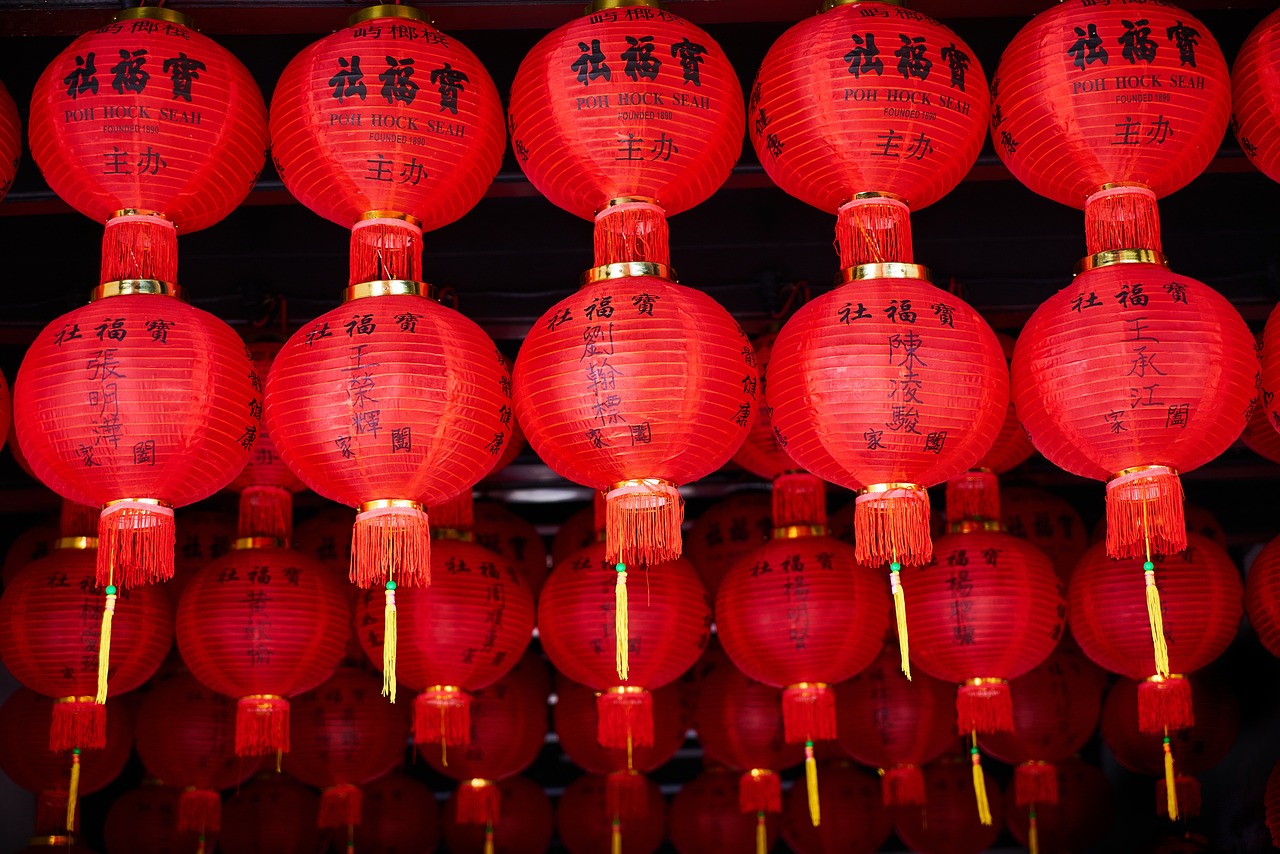
Design Inspiration
When it comes to creating a floral chandelier, the sky's the limit in terms of design inspiration! You might feel overwhelmed by the endless possibilities, but don't worry—let's break it down together. Whether you lean towards a rustic charm, a sleek and modern vibe, or a more bohemian flair, there’s a floral chandelier design that can perfectly reflect your personal style and enhance your space.
For a rustic chandelier, think of using natural materials like wood and metal combined with wildflowers and greenery. Imagine a frame made from reclaimed wood, adorned with sunflowers, daisies, and trailing ivy. This design can evoke the feeling of a serene garden party, making it perfect for a cozy dining area or an outdoor event. The juxtaposition of rough textures with vibrant blooms creates a stunning centerpiece that draws the eye and sparks conversation.
If you’re more inclined towards a modern aesthetic, consider using sleek lines and minimalistic designs. A circular or geometric frame painted in matte black or gold can serve as a chic base for your floral arrangement. Choose bold, monochromatic flowers—like deep red roses or crisp white lilies—and pair them with lush greenery for a striking contrast. This style is ideal for contemporary homes or upscale events where elegance is key.
Now, for those who adore a bohemian style, embrace the eclectic! Mixing various flower types and colors can create a whimsical, free-spirited look. Think of incorporating feathers, ribbons, or even fairy lights into your chandelier. This design thrives on layering and texture, so don’t be afraid to use an array of flowers such as peonies, orchids, and eucalyptus. The result will be a vibrant, eye-catching piece that encapsulates the essence of carefree living.
The color scheme you choose can dramatically affect the overall aesthetic of your floral chandelier. It’s important to select complementary colors that not only enhance your chosen style but also ensure visual harmony. For a rustic look, earthy tones like greens, browns, and yellows work beautifully, while a modern chandelier might benefit from a monochrome palette with pops of color. Bohemian designs can embrace a riot of colors—think bright pinks, purples, and oranges—creating a vibrant tapestry of hues.
Incorporating seasonal elements into your chandelier can make it more dynamic and relevant throughout the year. For instance, in spring, you might use tulips and cherry blossoms, while summer could bring in sunflowers and zinnias. Autumn can be represented with rich oranges and reds, using dahlias and chrysanthemums, and winter might feature evergreens and white flowers to evoke a sense of festivity. This not only keeps your design fresh but also allows you to celebrate the changing seasons in your home.
Adding personal touches can truly make your floral chandelier unique. Consider incorporating sentimental items such as dried flowers from your wedding bouquet or favorite trinkets that tell a story. You might also choose flowers that hold special meaning for you or your family, creating a chandelier that is not just beautiful but also deeply personal. These elements will not only enhance the visual appeal but also add layers of meaning to your creation.
In conclusion, the design inspiration for your floral chandelier is all about expressing your style and personality. Whether you opt for rustic, modern, or bohemian, remember to play with colors, seasonal elements, and personal touches. The beauty of a floral chandelier lies in its ability to transform any space into a breathtaking focal point!
Q: What types of flowers are best for a floral chandelier?
A: Choose flowers that are sturdy and have a longer lifespan, such as roses, peonies, or even artificial flowers for longevity. Seasonal flowers can also add a fresh touch.
Q: How do I ensure my floral chandelier is stable?
A: Make sure to securely attach your flowers and greenery to the frame using floral wire and check the weight distribution to maintain balance.
Q: Can I use lights in my floral chandelier?
A: Absolutely! Incorporating fairy lights or small LED lights can add a magical glow to your chandelier, especially for evening events.
Q: How often should I replace the flowers?
A: If using fresh flowers, it's best to replace them every few days to keep your chandelier looking vibrant. Dried or artificial flowers can last much longer!

Color Schemes
When it comes to creating a floral chandelier, the color scheme you choose can be a game-changer. Imagine walking into a room where the chandelier not only lights up the space but also adds a splash of color that reflects your personal style. The right colors can evoke emotions, set the mood, and even transform the atmosphere of your home. So, how do you select the perfect palette for your floral masterpiece?
First, consider the overall theme of your space. Are you leaning towards a rustic vibe with earthy tones, or do you prefer a modern look with bold, vibrant colors? Each style has its own unique charm, and your color choices should complement that. For instance, if your home features neutral walls, a chandelier with bright, contrasting colors can create an eye-catching focal point. On the flip side, if your decor is already packed with color, you might want to opt for softer, more muted tones to avoid overwhelming the senses.
Another important factor is seasonality. Different seasons bring different colors to mind. In spring, think pastels like soft pinks and light blues; in summer, vibrant yellows and deep oranges can add a cheerful touch; autumn calls for rich reds, oranges, and browns; while winter can be accented with cool blues and whites or warm golds and deep greens. By aligning your color scheme with the seasons, you can keep your chandelier feeling fresh and relevant all year round.
To help you visualize your options, here’s a simple table that outlines some popular color combinations based on different styles:
| Style | Color Palette |
|---|---|
| Rustic | Earthy Greens, Warm Browns, Creams |
| Modern | Bold Reds, Bright Whites, Deep Blues |
| Bohemian | Vibrant Purples, Rich Golds, Turquoise |
| Classic | Soft Pinks, Whites, Light Grays |
Don't forget about complementary colors! When you pair colors that are opposite each other on the color wheel, you create a striking visual contrast that can make your chandelier pop. For example, if you choose a base of soft pink flowers, consider adding a few deep green leaves or accents of vibrant turquoise to create that wow factor. This approach not only adds depth but also ensures that your chandelier stands out as a stunning centerpiece.
Lastly, don’t shy away from adding your own personal flair. Whether it’s a favorite color from your childhood or a hue that holds special meaning, incorporating these elements can make your floral chandelier truly one-of-a-kind. Remember, it’s all about creating a piece that resonates with you and enhances the beauty of your space.
- What flowers work best for a floral chandelier? Choose flowers that are sturdy and long-lasting, such as roses, orchids, or hydrangeas.
- How often should I change the flowers in my chandelier? It’s best to refresh the flowers every 1-2 weeks to keep your chandelier looking vibrant.
- Can I use artificial flowers? Absolutely! Artificial flowers can provide long-lasting beauty and require less maintenance.
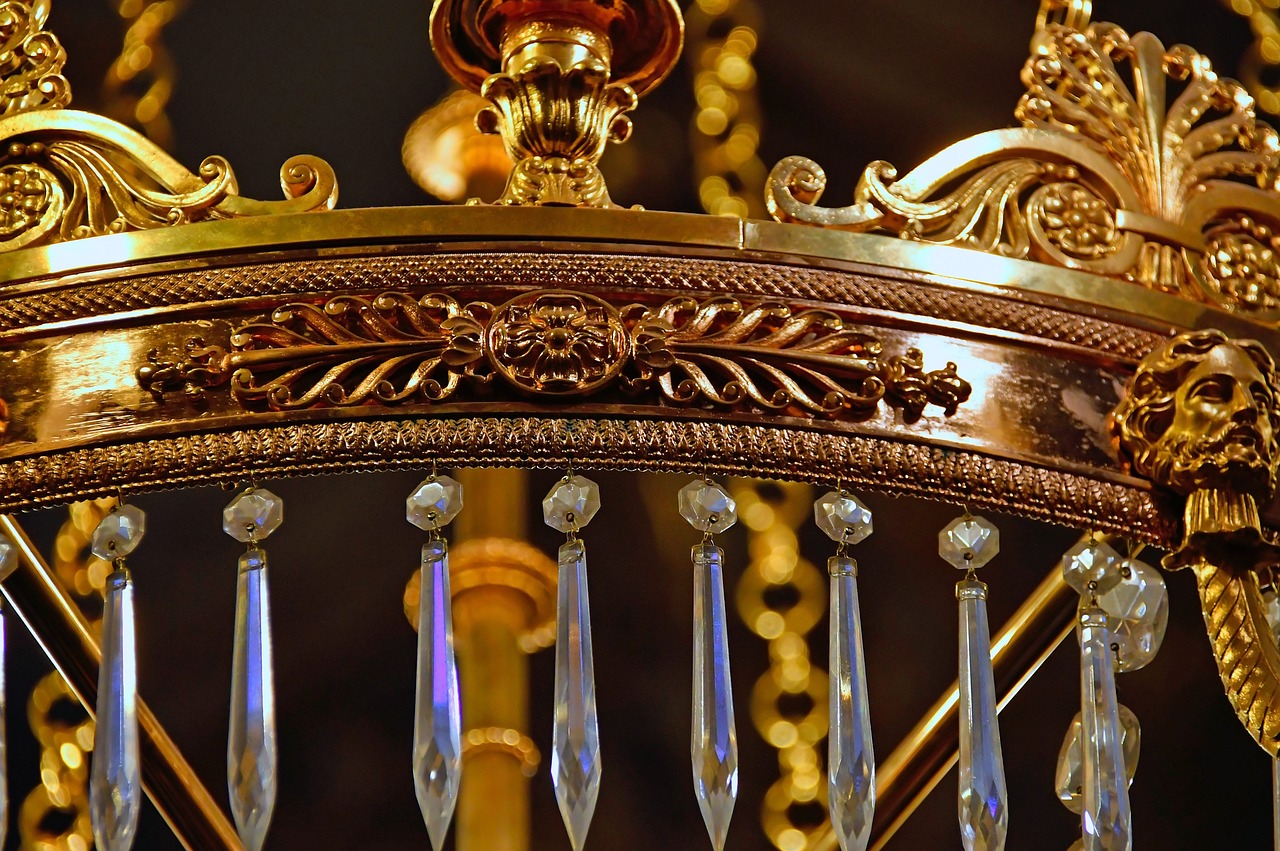
Seasonal Themes
Incorporating seasonal elements into your floral chandelier can truly elevate its charm and make it a dynamic piece that resonates with the time of year. Imagine walking into a room and being greeted by a stunning display of flowers that not only reflect the season but also bring a sense of warmth and joy. For instance, in the spring, you might want to opt for bright and colorful blooms like tulips and daffodils, while in the fall, deep hues of oranges and reds from chrysanthemums and dahlias can create a cozy atmosphere.
To keep your chandelier fresh and relevant throughout the year, consider the following seasonal themes:
- Spring: Embrace the vibrancy of nature with pastel-colored flowers like peonies, cherry blossoms, and lilacs. Pair these with lush green foliage to create a lively and refreshing look.
- Summer: Bright and bold colors are the way to go! Think sunflowers, hydrangeas, and zinnias. You can even add some wildflowers for a more bohemian vibe.
- Autumn: Capture the essence of fall with rich, warm colors. Use flowers like marigolds, sunflowers, and ornamental cabbage, complemented by twigs or branches for a rustic touch.
- Winter: For a winter wonderland feel, consider using evergreens, pinecones, and white flowers such as roses or lilies. Adding some glittery accents can also create a magical effect.
By aligning your floral chandelier with the seasons, you not only enhance your home decor but also create a visual narrative that changes throughout the year. This approach keeps your decor feeling fresh and inviting, making your home a welcoming haven for family and friends. So, as the seasons change, let your chandelier reflect that transformation, turning it into a centerpiece that tells a story of nature's beauty.
Q: How often should I change the flowers in my seasonal chandelier?
A: It’s best to refresh your flowers every couple of weeks, especially if they start to wilt. However, for seasonal themes, you can change them with the seasons—every three months is a good rule of thumb.
Q: Can I use artificial flowers for my chandelier?
A: Absolutely! Artificial flowers can be a great option, especially if you want your chandelier to last longer without maintenance. Just ensure they look realistic and complement your design.
Q: What is the best way to hang my floral chandelier?
A: Make sure to use sturdy hooks and secure your chandelier well to prevent any accidents. You can also consider the height of the chandelier to ensure it doesn’t obstruct views or movement in the room.
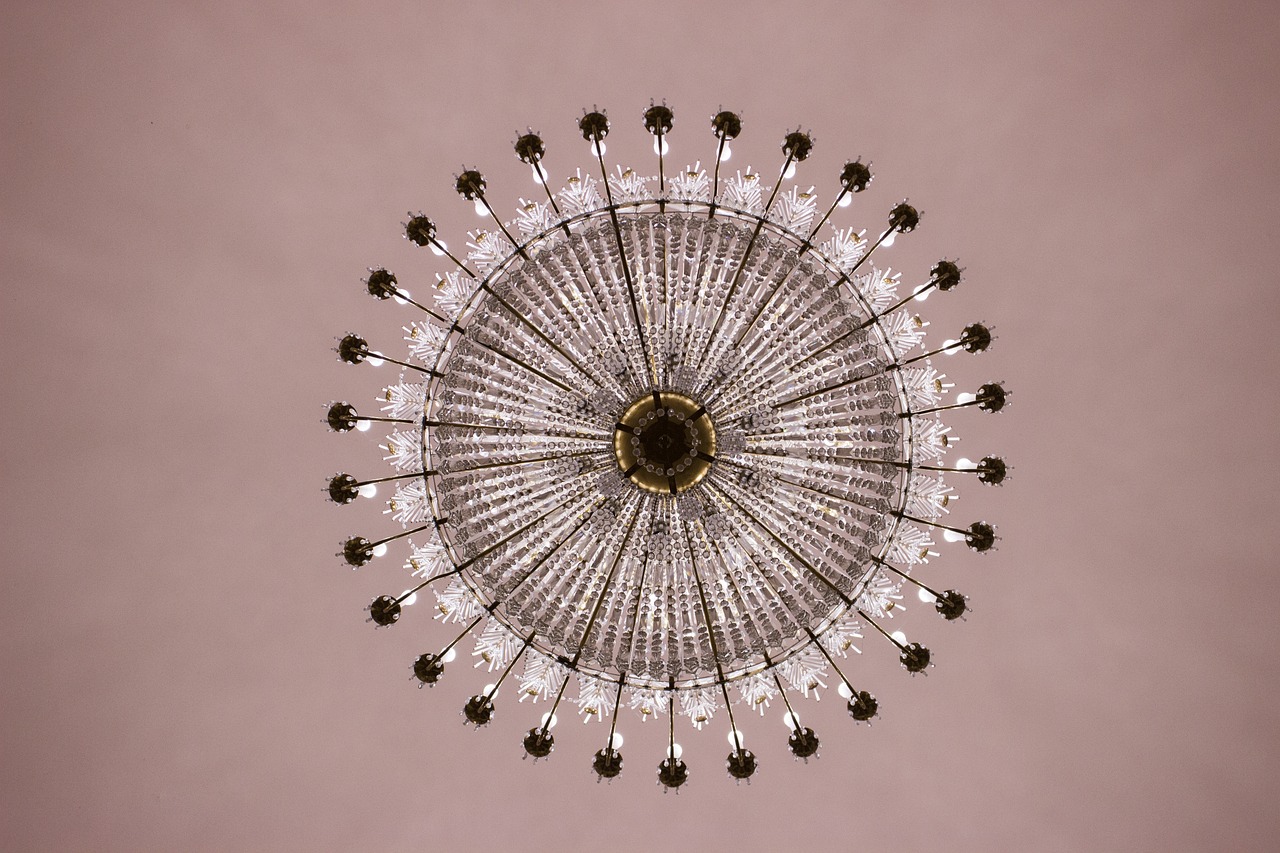
Personal Touches
When it comes to creating a floral chandelier, the magic often lies in the you incorporate into your design. After all, this isn’t just any chandelier; it’s a reflection of your personality and style! Think of it as a canvas where you can express your creativity and love for the things that matter most to you. One of the simplest ways to add a personal flair is by using sentimental flowers. Perhaps there’s a particular bloom that reminds you of a special occasion or a loved one. Incorporating these flowers can transform your chandelier from a mere decoration into a cherished memory.
Additionally, consider adding elements that tell your story. For example, if you have a collection of vintage brooches or charms, you can elegantly attach these to your chandelier. Not only do they add a unique aesthetic, but they also serve as conversation starters. Imagine your friends admiring your creation and asking about the significance of each piece! This is where your floral chandelier becomes a true centerpiece of storytelling.
Another idea is to think about the theme of your space. If your home has a coastal vibe, you might want to incorporate shells or driftwood into your chandelier design. On the other hand, if you lean towards a more rustic aesthetic, consider using twine or burlap to wrap around the frame. These elements can create a cohesive look that ties your chandelier into the overall decor of your home.
Don't forget about lighting. Adding small fairy lights or candles can illuminate your floral chandelier beautifully, enhancing its charm during the evening hours. This not only adds a warm glow but also creates a magical atmosphere that makes your space feel inviting and cozy.
In summary, the beauty of a floral chandelier lies in its ability to reflect your unique style and memories. By incorporating personal touches—be it through flowers that hold special meaning, decorative elements that tell your story, or thoughtful lighting—you can create a stunning piece that is truly one-of-a-kind. So, let your imagination run wild and make your floral chandelier a true representation of you!
- What types of flowers are best for a floral chandelier?
Consider using flowers with sturdy stems like roses, peonies, or chrysanthemums, as they hold up well in a chandelier setting.
- How long will my floral chandelier last?
With proper care, such as regular watering and maintenance, your floral chandelier can last anywhere from a few days to a couple of weeks, depending on the flowers used.
- Can I use artificial flowers?
Absolutely! Artificial flowers can provide a long-lasting option that requires no maintenance, allowing you to enjoy your chandelier year-round.
- How do I hang my floral chandelier safely?
Ensure that you use a sturdy hook and check the weight capacity. You can also use fishing line or strong twine to secure it for added safety.
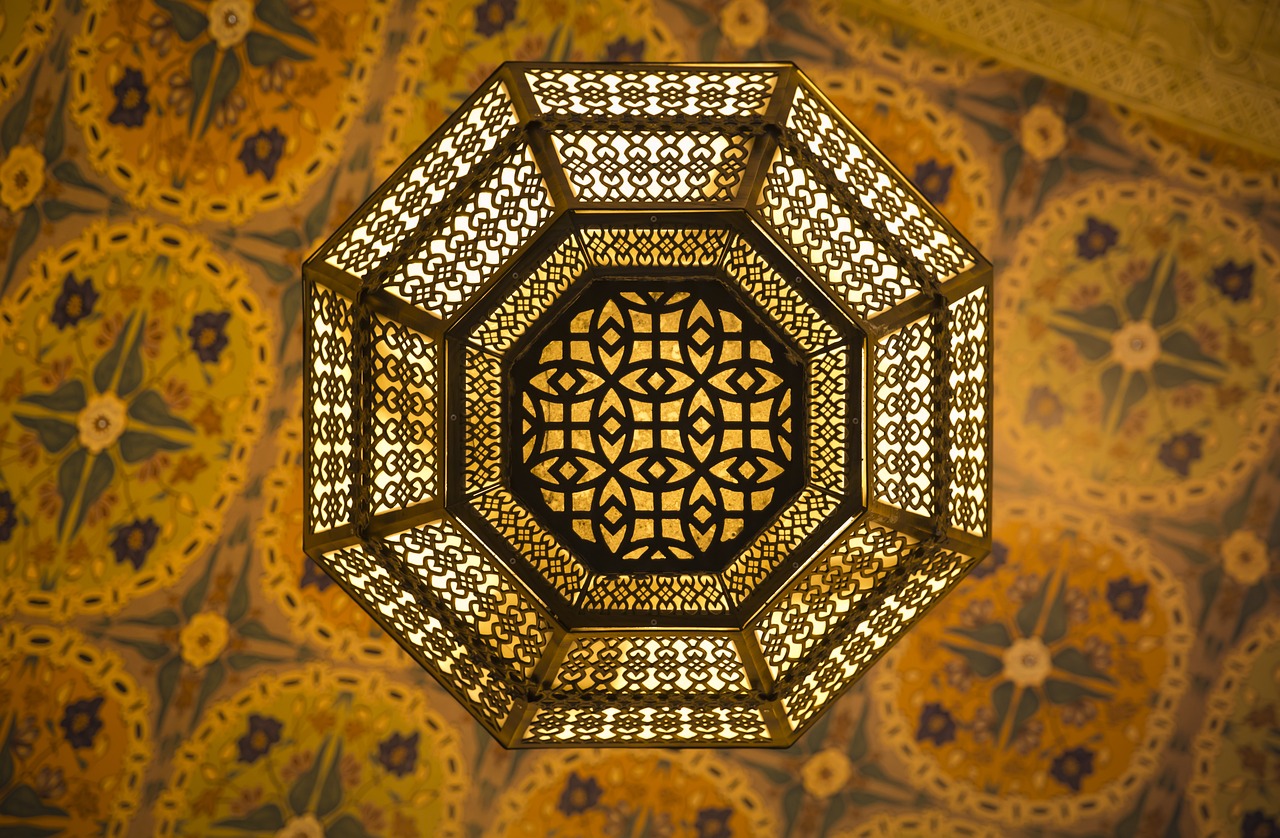
Proportions and Sizing
When it comes to creating a floral chandelier, one of the most critical aspects to consider is . Imagine walking into a room and being greeted by a chandelier that perfectly complements the space—it's a showstopper! But how do you achieve that? First, you need to measure the area where you plan to hang your chandelier. A good rule of thumb is to ensure that the diameter of your chandelier is about one-half to two-thirds the width of the table or area beneath it. This will create a balanced look that draws the eye without overwhelming the space.
Next, think about the height. If your chandelier is too low, it can obstruct views and feel cramped, while one that’s too high might not have the visual impact you desire. A height of 30 to 36 inches above a dining table is generally ideal, but if you have high ceilings, you can go a bit higher—just be mindful of the overall effect. You want the chandelier to feel like it belongs in the room, not just a floating afterthought!
Now, let’s talk about the arrangement of flowers. The size of your flowers and how you group them can significantly affect the chandelier's overall appearance. For instance, larger blooms can serve as focal points, while smaller flowers can fill in gaps and add texture. Consider the following tips when arranging your flowers:
- Layering: Use various heights of flowers to create depth. Taller flowers should be placed in the center or at the top, while shorter ones can fill in around the edges.
- Color Distribution: Distribute colors evenly throughout the chandelier to ensure a cohesive look. Avoid clustering similar colors together unless you’re going for a specific effect.
- Balance: Aim for symmetry when arranging your flowers, but don’t be afraid to incorporate some asymmetrical elements for a more organic feel.
Lastly, consider the weight of your chandelier. If you’re using heavier materials or a lot of flowers, ensure that your hanging mechanism is robust enough to support the weight. You don’t want your beautiful creation to come crashing down! A well-constructed frame made from materials like metal or sturdy branches can provide the necessary support.
In summary, achieving the right proportions and sizing for your floral chandelier is about striking a balance. By measuring your space, considering the arrangement of your flowers, and ensuring stability, you can create a stunning centerpiece that will leave your guests in awe. Remember, your chandelier is not just a decoration; it's a statement piece that reflects your style and creativity!
- How do I choose the right flowers for my chandelier? Consider seasonal flowers and colors that complement your room's decor.
- Can I use artificial flowers? Absolutely! Artificial flowers can be a great option for longevity and maintenance.
- What type of frame should I use? A sturdy frame made of metal or wood is ideal for supporting the weight of the flowers.
- How often do I need to maintain my floral chandelier? Regular maintenance is key; check for wilting flowers and replace them as needed.
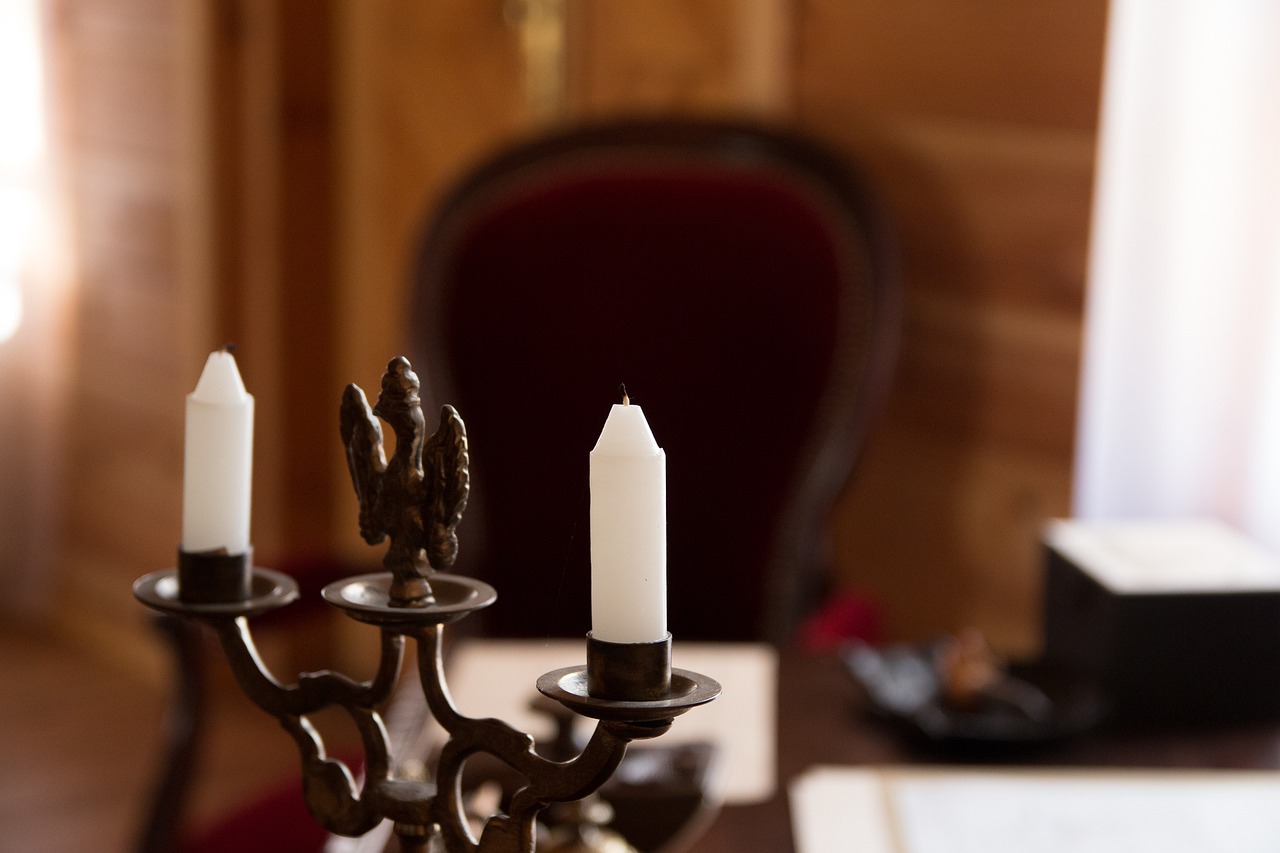
Assembly Process
Assembling your DIY floral chandelier is where the magic truly happens! This is the moment when your creativity transforms into a stunning centerpiece that will dazzle your guests. Before diving into the assembly, it’s essential to gather all your materials and tools. You’ll need a sturdy frame, floral wire, floral tape, scissors, and, of course, your beautiful flowers and greenery. Think of this as setting the stage for a grand performance; every element must be in its place for the show to go on!
Start by constructing the frame of your chandelier. If you’re using a metal or wooden frame, ensure it’s robust enough to support the weight of your floral arrangements. A round or oval shape often works best, as it allows for even distribution of flowers. If you’re feeling adventurous, you can even create a more intricate design! Once your frame is ready, it’s time to think about how you will attach your flowers. This is where floral wire and tape come into play.
Begin attaching your flowers by cutting the stems to your desired length. You want them to be long enough to secure firmly into the frame but not so long that they overwhelm the design. A good rule of thumb is to cut stems at an angle, allowing for better water absorption if you're using fresh flowers. Wrap the stems with floral tape to keep them secure and then use floral wire to attach them to the frame. Think of this process as building a bouquet, but instead, you’re creating a breathtaking chandelier!
As you arrange the flowers, remember to step back occasionally and assess the overall look. You want to ensure that the colors and shapes are balanced and that no particular area looks too sparse or overcrowded. Visual equilibrium is key! If you’re using a mix of different flowers and greenery, consider the following tips:
- Layering: Start with larger blooms and fill in with smaller ones.
- Texture: Incorporate a variety of textures to add depth.
- Color: Use a mix of complementary colors for visual interest.
Once you’re satisfied with the arrangement, it’s time to secure everything in place. Double-check that all flowers are tightly bound and won’t fall out. After this, it’s crucial to think about how you will hang your chandelier. You want it to be secure and stable, so consider using sturdy chains or ropes that match the aesthetic of your design. Attach these to the frame, ensuring they are evenly spaced for balance.
Finally, before you hang your creation, give it a good spritz of water to keep those flowers fresh. Once you’ve found the perfect spot to showcase your chandelier, hang it securely. Step back, and admire your handiwork! You’ve turned simple materials into a stunning piece of art that will elevate any space.
Q: How long will my floral chandelier last?
A: The lifespan of your chandelier depends on the type of flowers used. Fresh flowers typically last a week to ten days, while dried flowers can last for months or even years with proper care.
Q: Can I use artificial flowers?
A: Absolutely! Artificial flowers are a great option if you want a long-lasting chandelier that requires less maintenance.
Q: How do I keep the flowers fresh?
A: Regularly mist your flowers with water and keep the chandelier in a cool area away from direct sunlight to prolong their life.
Q: What is the best way to clean my chandelier?
A: Use a soft cloth to gently wipe the flowers and frame. For fresh flowers, be careful not to bruise them.
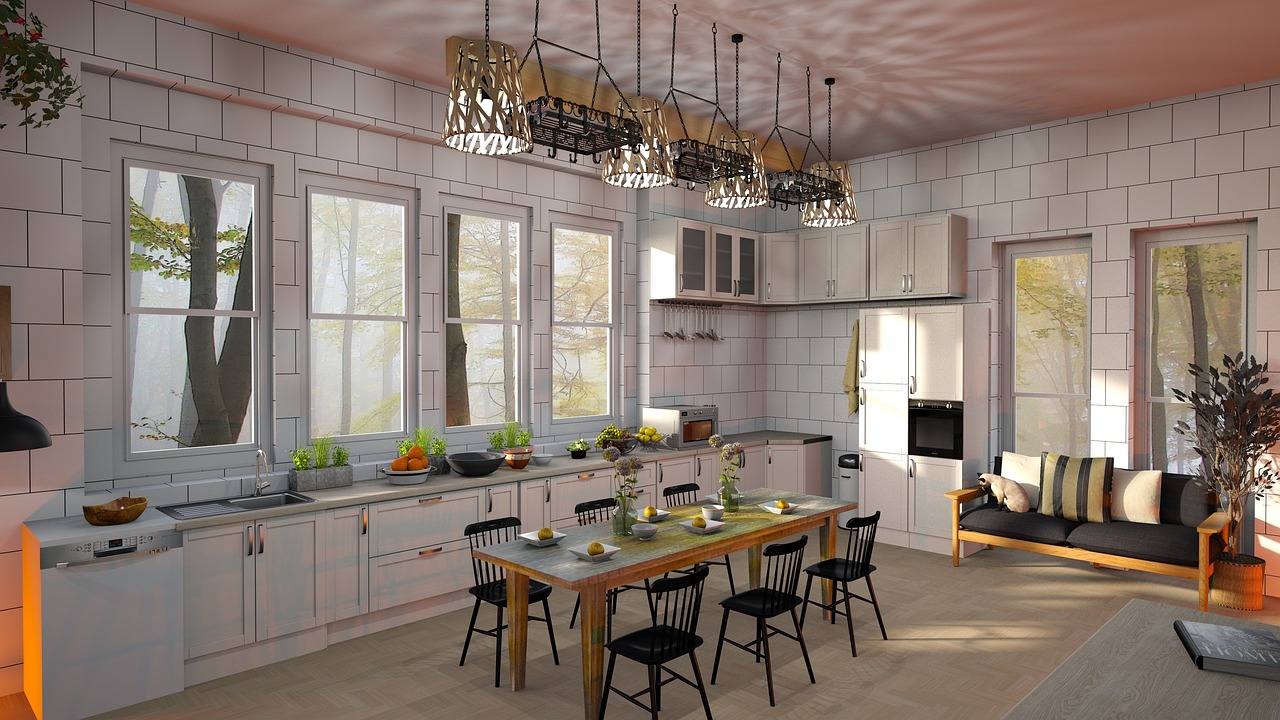
Hanging Techniques
When it comes to your stunning DIY floral chandelier, how you hang it can make all the difference! Not only do you want it to look fabulous, but you also need to ensure it's secure and safe. Think of your chandelier as a delicate piece of art; just like a painting needs the right frame, your chandelier needs the right support. There are several techniques you can use to hang your creation, and each has its own charm and practicality.
First off, consider the location where you want to hang your chandelier. Is it in the dining room, living room, or perhaps a cozy nook? The height at which you hang it is crucial. Ideally, you want it to be around 30 to 36 inches above a dining table or similar surface. This height allows for ample light while still making it a focal point of the room. If you’re hanging it in a living area, you might want to go a bit higher, about 7 feet off the ground, to keep it from obstructing views.
Next, let’s talk about the materials you’ll need for hanging. Here’s a quick overview:
| Material | Purpose |
|---|---|
| Sturdy wire or chain | To suspend the chandelier securely |
| Ceiling hook or bracket | To anchor the chandelier to the ceiling |
| Weight distribution clips | To evenly distribute the weight of the chandelier |
Now, let’s dive into some hanging techniques. One popular method is using a ceiling hook. This is often a go-to choice for many DIY enthusiasts. Simply install a sturdy hook into the ceiling and attach your chandelier using a chain or wire. This method is not only secure but also allows for easy adjustments in height. If you’re feeling a bit more adventurous, you could also opt for a pulley system. This technique adds a touch of whimsy and lets you adjust the height of your chandelier with ease. Imagine being able to lower it for a dinner party and then raise it back up for everyday use!
Another technique involves using a wooden beam or a sturdy piece of driftwood. If you're going for a rustic or bohemian vibe, this method can add an earthy feel to your décor. Simply attach your chandelier to the wood using wire or hooks, and then suspend the entire piece from the ceiling. This not only looks fantastic but also provides excellent support. Just ensure that your beam is securely fastened to the ceiling to avoid any mishaps.
Lastly, don’t forget about the aesthetic aspect of hanging your chandelier. You might want to consider how the light will cast shadows and illuminate your space. Hanging it slightly off-center can create an intriguing visual effect, drawing the eye and adding depth to your room. Remember, the goal is to create a harmonious balance between functionality and beauty!
Q1: How do I know if my chandelier is heavy enough for my hanging method?
A1: Always check the weight capacity of your ceiling hook or bracket. If your chandelier is particularly heavy, consider using multiple hooks or a more robust support system.
Q2: Can I hang my chandelier outdoors?
A2: Yes, you can! Just ensure that the materials you use are weather-resistant to withstand the elements.
Q3: What if I want to change the height of my chandelier later?
A3: Using a pulley system or adjustable chains allows for easy height adjustments without needing to rehang the entire piece.
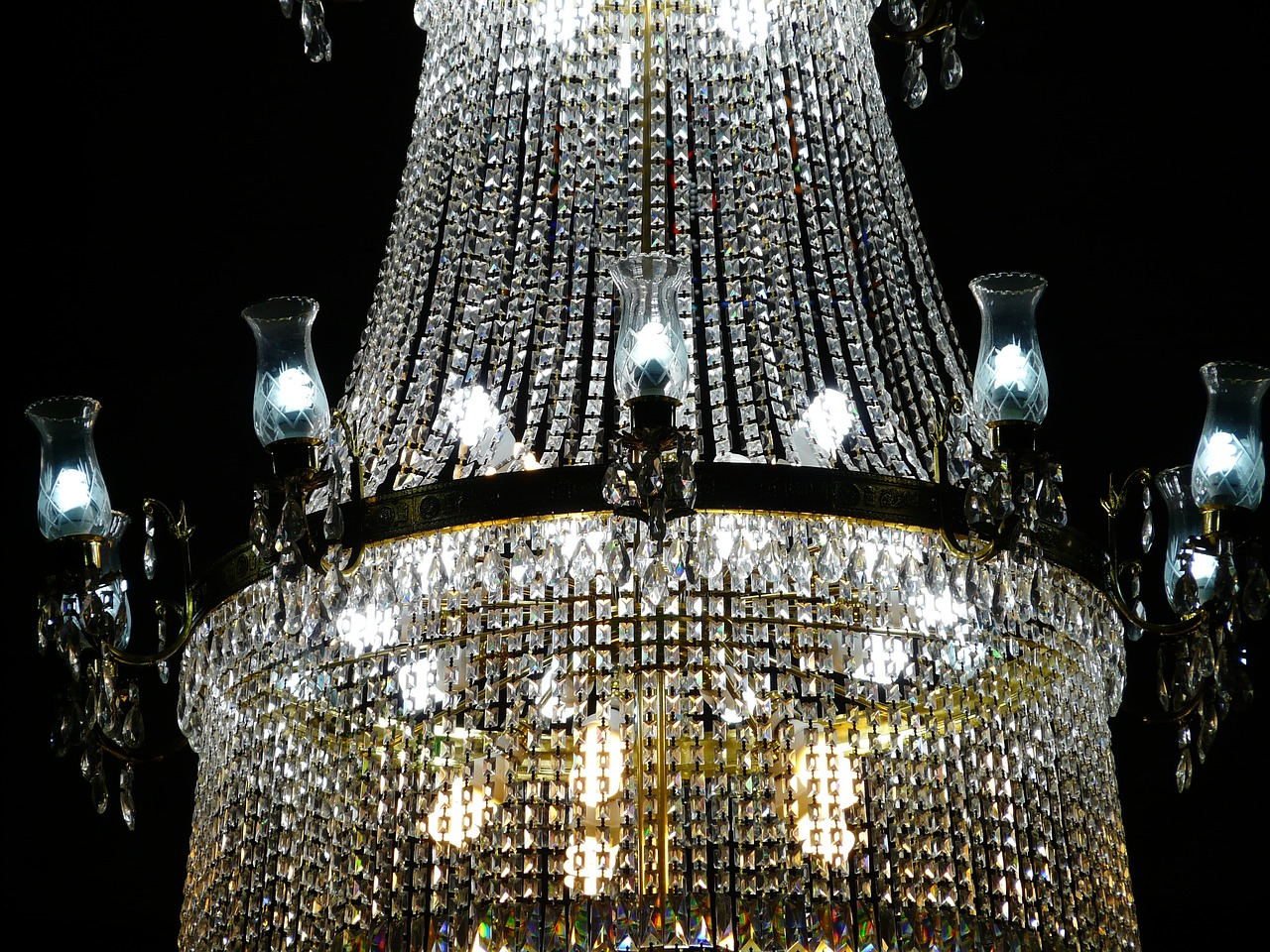
Maintenance Tips
Once you've created your stunning floral chandelier, the next step is ensuring it remains a captivating centerpiece in your home. Just like a beautiful garden requires care, your chandelier will need some attention to keep it looking fresh and vibrant. Here are some essential maintenance tips to help you preserve the beauty of your floral creation.
First and foremost, regularly check the water levels if your chandelier includes fresh flowers. Flowers thrive in water, and keeping their stems submerged will prolong their life. Make it a habit to check the water every few days, and refill as needed. If you notice any wilting or browning, don’t hesitate to replace those flowers. Remember, a few fresh blooms can make a world of difference!
In addition to water, light exposure plays a crucial role in the longevity of your floral chandelier. While it might be tempting to showcase your chandelier in bright, sunny areas, too much direct sunlight can cause flowers to wilt faster. Instead, opt for a location with indirect light to maintain the vibrancy of your blooms. If you find that some flowers are fading faster than others, consider rotating the chandelier occasionally, allowing all flowers to receive equal light exposure.
Another important aspect of maintenance is cleaning. Dust and debris can accumulate on the flowers and frame, detracting from the overall aesthetic. Use a soft, dry cloth to gently wipe down the frame and any artificial components. For fresh flowers, a light misting with water can help keep them hydrated while also refreshing their appearance. Just be careful not to overdo it; too much moisture can lead to mold growth.
If you’ve incorporated any greenery or foliage into your chandelier, be mindful of their specific needs as well. Some plants might require more frequent trimming or different light conditions. Researching the care requirements for each type of plant will ensure that your chandelier remains lush and beautiful.
Lastly, consider incorporating a seasonal refresh into your maintenance routine. As the seasons change, so do the flowers available to you. Embrace the beauty of each season by swapping out blooms and greenery to reflect the time of year. For instance, use vibrant sunflowers and daisies in the summer, while opting for rich red and gold hues in the fall. This not only keeps your chandelier looking fresh but also allows you to express your creativity and adapt to the changing seasons.
By following these maintenance tips, you can ensure that your floral chandelier remains a stunning focal point in your home. Remember, a little bit of care goes a long way in preserving the beauty of your floral masterpiece!
Here are some common questions that might arise as you embark on your floral chandelier journey:
- How long do fresh flowers last in a chandelier? Fresh flowers typically last between 5 to 10 days, depending on the type of flower and the care provided.
- Can I use artificial flowers instead? Absolutely! Artificial flowers can be a great low-maintenance option and can last for years with proper care.
- What types of flowers are best for a chandelier? Flowers with sturdy stems and blooms, such as roses, peonies, and hydrangeas, work well. Consider using a mix of textures for added visual interest.
- How often should I change the flowers? For fresh arrangements, consider changing the flowers every week or two for optimal freshness and appearance.
Frequently Asked Questions
- What materials do I need to create a floral chandelier?
To make a stunning floral chandelier, you'll need a variety of materials, including fresh or artificial flowers, greenery, a sturdy frame (like a hoop or wire structure), floral wire, and hanging components. Don't forget tools like scissors, wire cutters, and a hot glue gun for assembly!
- How do I choose the right flowers for my chandelier?
Choosing the right flowers depends on your style and the season. Opt for flowers that complement each other in color and size. For a rustic look, go for wildflowers; for a modern vibe, choose sleek, minimalistic blooms. Always consider the longevity of the flowers to ensure your chandelier stays fresh longer.
- Can I customize my chandelier with personal touches?
Absolutely! Adding personal touches makes your chandelier unique. You can incorporate sentimental items like family heirlooms, favorite flowers, or even themed decorations that reflect your personality. This will give your chandelier a special meaning that goes beyond just aesthetics.
- What are some tips for maintaining my floral chandelier?
To keep your floral chandelier looking fresh, regularly check for wilting flowers and replace them as needed. Mist the flowers with water to keep them hydrated, and if you used fresh flowers, consider changing the water in the base regularly. Keeping it in a cool, dry place can also help extend its life.
- How do I safely hang my floral chandelier?
When it comes to hanging your chandelier, ensure you use strong, reliable hooks and consider the weight of your design. You can use fishing line or sturdy chains for a secure hold. Always double-check that it’s stable before letting it hang, and make sure it’s positioned safely away from high-traffic areas.
- Can I use seasonal flowers in my chandelier?
Yes! Incorporating seasonal flowers can keep your chandelier looking fresh and relevant throughout the year. For example, use bright blooms in spring, rich autumn hues in fall, and evergreens in winter. This not only enhances the aesthetic but also allows you to celebrate the changing seasons in your decor.



















